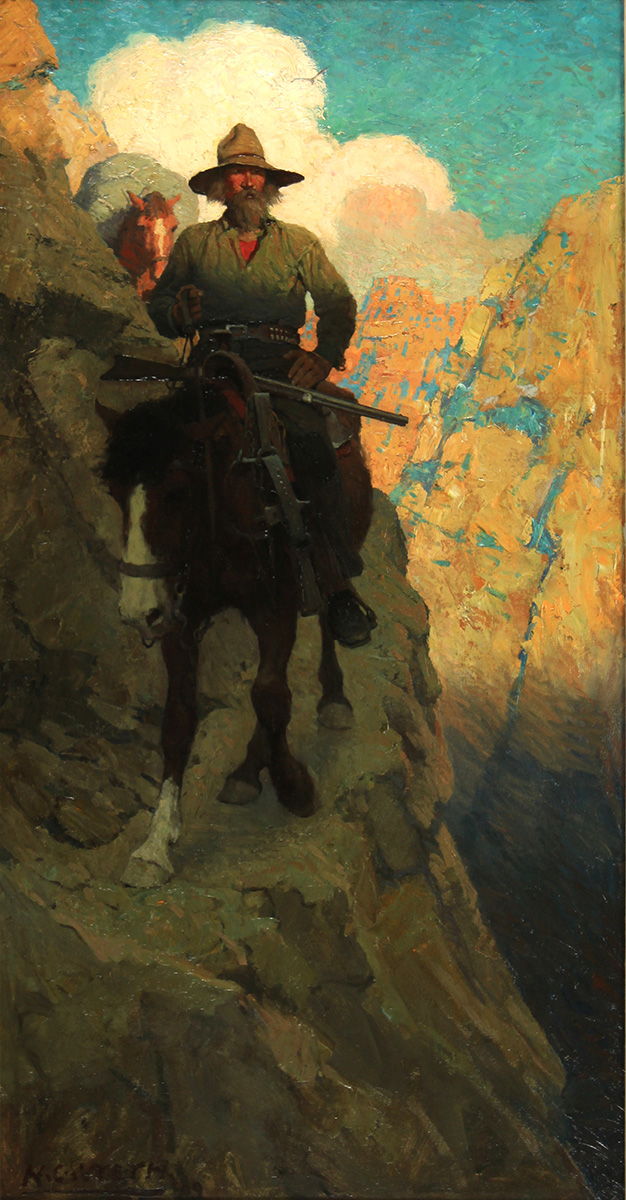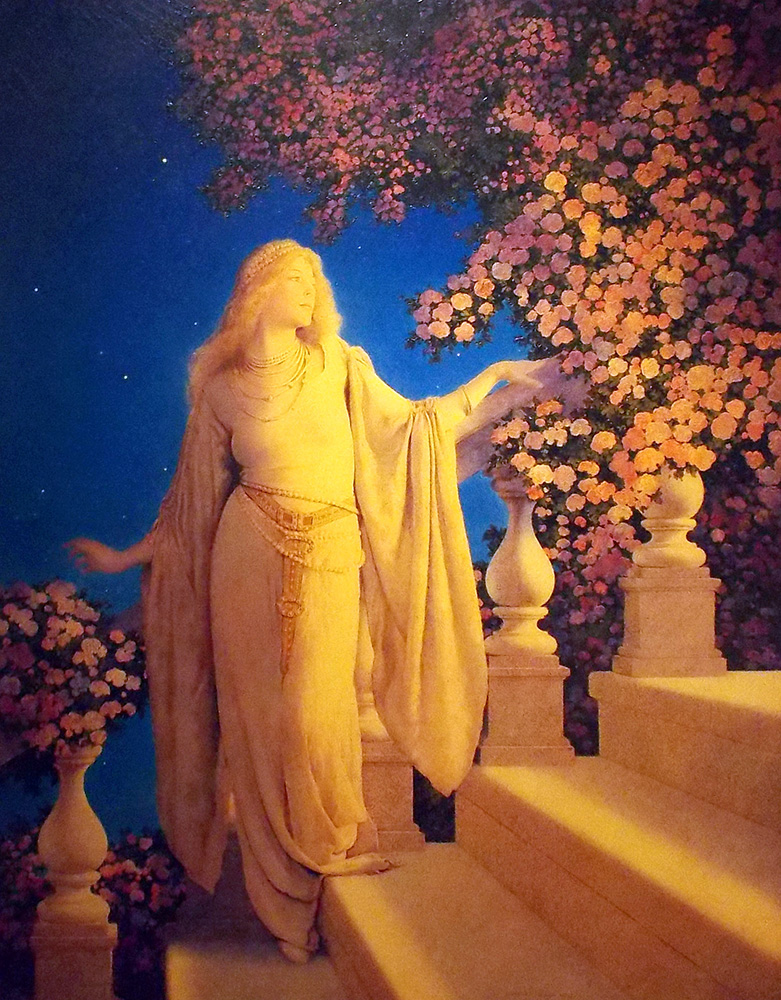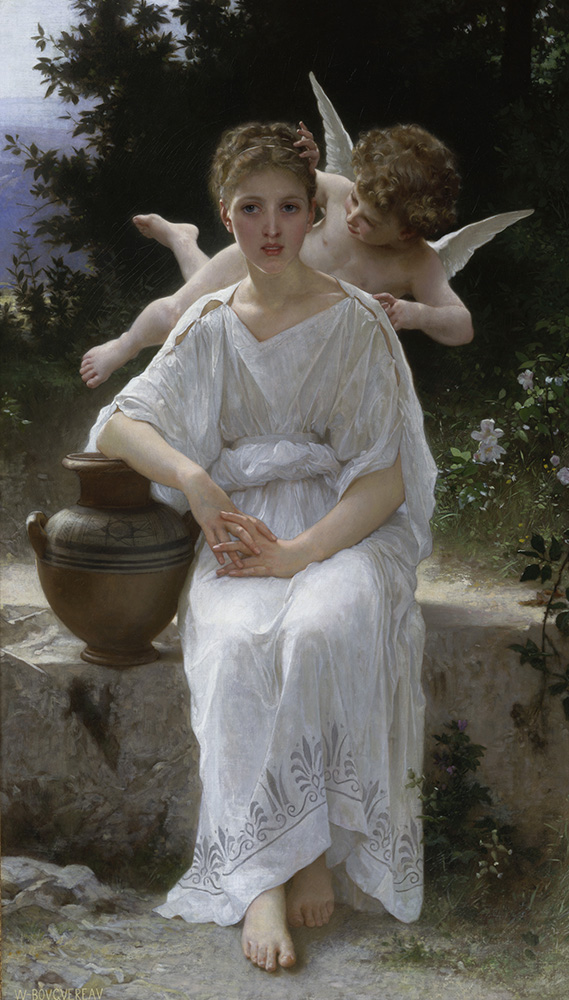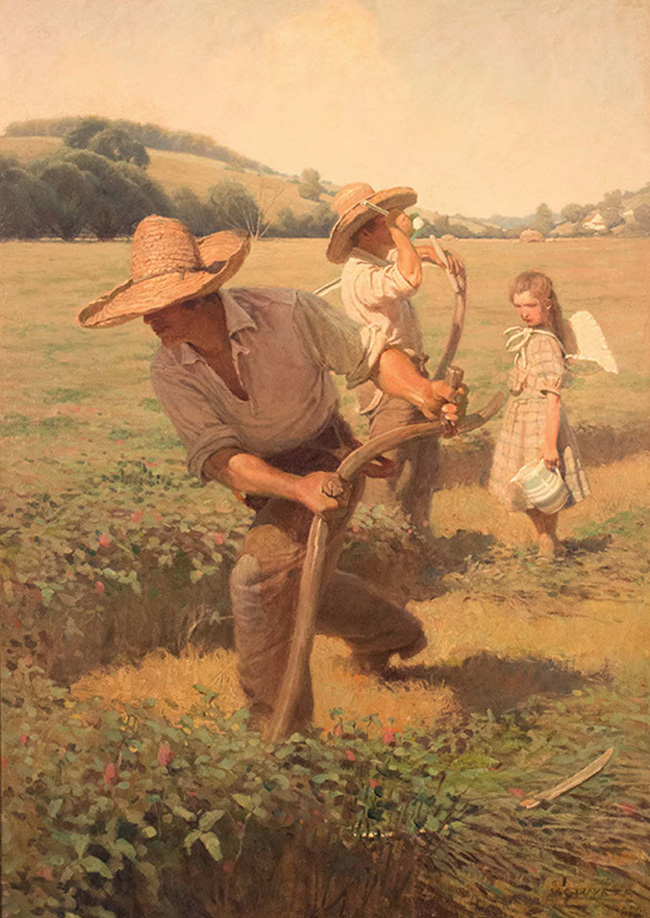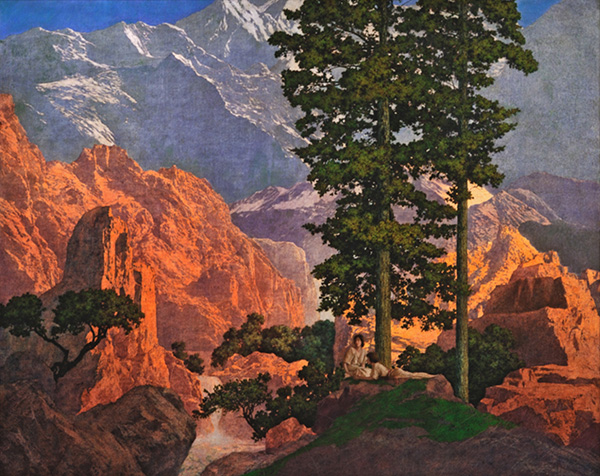KEEPERS OF THE FLAME:
PARRISH, WYETH, ROCKWELL AND THE NARRATIVE TRADITION
One of the “best American museum
exhibits this fall.”
USA TODAY
“…stunning artworks created
by master illustrators..”
BOSTON GLOBE
“…thoroughly engrossing
…beautiful paintings”
PATRIOT LEDGER
June 9 through October 28, 2018
Narrative realism in picture making has been a constant—not just through eight hundred years of Western art, but through the entire history of humanity’s creative efforts, from the earliest cave paintings and frescos on the walls of ancient Egyptian tombs to today’s published imagery for print, animation, and gaming. With irrefutable evidence on display, Keepers of the Flame: Parrish, Wyeth, Rockwell and the Narrative Tradition, opening on June 9, will shed light on the unbreakable thread connecting American illustration and legendary artists Maxfield Parrish, N.C. Wyeth, and Norman Rockwell to the roots of European painting through the long line of teachers, who have, through the centuries, passed along the wisdom, knowledge, and techniques of the ages to the next generation of creators.
At the heart of this exhibition are Parrish’s lush fantasies, set in the timeless fairytale landscapes of his imaginings; Wyeth’s exuberant compositions and unforgettable characters, which breathe life into classic literature; and Rockwell’s humanistic portrayals, filled with humor and insights, for the nation’s most popular publications. Curated by Dennis Nolan, an award-winning illustrator and professor of art at Hartford Art School, University of Hartford, the exhibition featuring more than 85 works by American and European masters spans five hundred years, tracing the student to teacher lineage of three Golden Age illustrators to their artistic forbearers in the Italian Renaissance. Paintings intended for a broad clientele, whether church or state, private collectors or public entities, transcend their original purpose to through the art of visual storytelling. Narrative paintings inspired by religious, mythological, allegorical, and literary sources, painted with academic precision, accuracy, and beauty, will be on view.
This unbroken line of pupils and their mentors includes artworks by great American painters and teachers, Robert Vonnoh, Thomas Anshutz, George Bridgman, Henry Siddons Mowbray, Howard Pyle, and Thomas Eakins, their paintings on display next to the work of mainstays of the French academies of the 19th century, Jean Leon Gerome, William Bouguereau, Paul Delaroche, Henri Lehmann, Mark Charles Gleyre, and more. The lineage continues, following the teaching of principles of narrative picture making past Rococo, Baroque, and Renaissance masters to the workshops of Florence, Italy, the birthplace of Western painting. Artwork from 1400 to the mid-1960s, in the galleries and documented in a richly illustrated catalogue, reveals the ways in the keepers of the flame have ensured the passage of centuries old traditions from one generation to the next through time.

The Lantern Bearers, 1908
Oil on canvas, mounted on board, 40” x 32”
Crystal Bridges Museum of American Art, Bentonville, Arkansas, 2006.71.
Photography by Dwight Primiano
In the Crystal Depths, 1906
Oil on canvas, 38″ x 26″
Illustration for N. C. Wyeth, “The Indian in His Solitude”, The Outing Magazine, vol. L, no. 3, June 1907
Brandywine River Museum of Art, Museum purchase, 1981
Girl at Mirror, c. 1954
Cover illustration for The Saturday Evening Post, March 6, 1954
Oil on canvas, 40 1/4″ x 38 1/2″
Norman Rockwell Museum Collection, NRACT.1973.008
©SEPS: Licensed by Curtis Publishing, Indianapolis, IN
ABOUT MAXFIELD PARRISH, N. C. WYETH, AND NORMAN ROCKWELL
IMAGES
Mr. Bhaer saw the drops on her checks; stooping down, he askes-“Heart’s dearest, why do you cry?”, 1938
Story illustration for Most Beloved American Writer by Katherine Anthony, Woman’s Home Companion, March 1938
Oil on canvas 32″ x 18″
Norman Rockwell Museum Collection, Museum purchase, NRM.1994.03
©Norman Rockwell Family Agency. All rights reserved.
RELATED EVENTS
MEDIA
Press
USA Today https://www.usatoday.com/story/travel/destinations/2018/09/10/museum-exhibits-fall/1233209002/
ArtScope Magazine https://artscopemagazine.com/2018/09/keepers-of-the-flame-rockwell-and-friends-in-stockbridge
WAMC: http://www.wamc.org/post/keepers-flame-norman-rockwell-museum
Boston Globe: https://www.bostonglobe.com/lifestyle/travel/2018/07/26/here-there-and-everywhere/WewxiDyXPrYgs1WtxSPfSO/story.html
The Patriot Ledger http://www.patriotledger.com/entertainmentlife/20180812/illustrators-and-their-influences-at-norman-rockwell-museum
Fine Art Connoisseur: https://fineartconnoisseur.com/2018/06/norman-rockwell-art-keepers-of-the-flame
Schenectady Gazette: https://dailygazette.com/article/2018/06/07/on-exhibit-keepers-of-the-flame
Get Visual: https://dbgetvisual.blogspot.com/2018/07/keepers-of-flame-at-norman-rockwell.html
TriCorner News: http://www.tricornernews.com/node/55874
U.S. News and World Report: https://www.usnews.com/news/best-states/massachusetts/articles/2018-06-09/works-by-parrish-wyeth-rockwell-highlight-art-connections
Berkshire Eagle: https://www.berkshireeagle.com/stories/museum-visitors-savor-their-brush-with-shuffletons-and-rockwells-skills,541806
Berkshire Eagle: https://www.berkshireeagle.com/stories/art-moves-in-traceable-lines-in-a-new-exhibit-at-the-norman-rockwell-museum,541588


